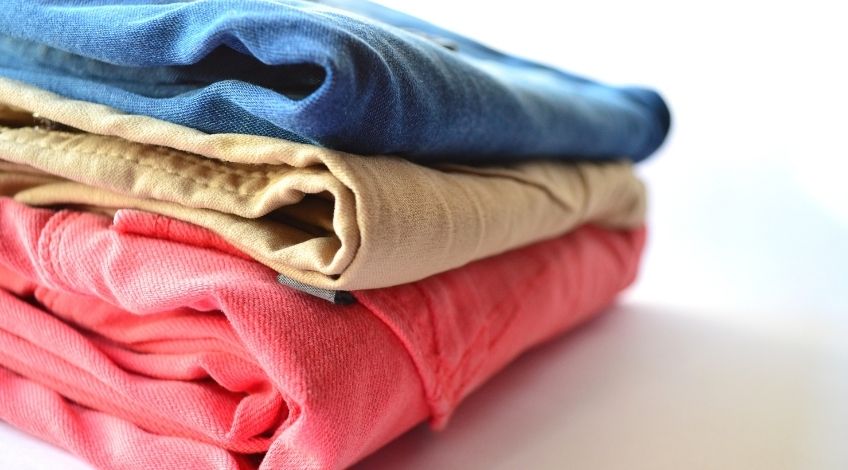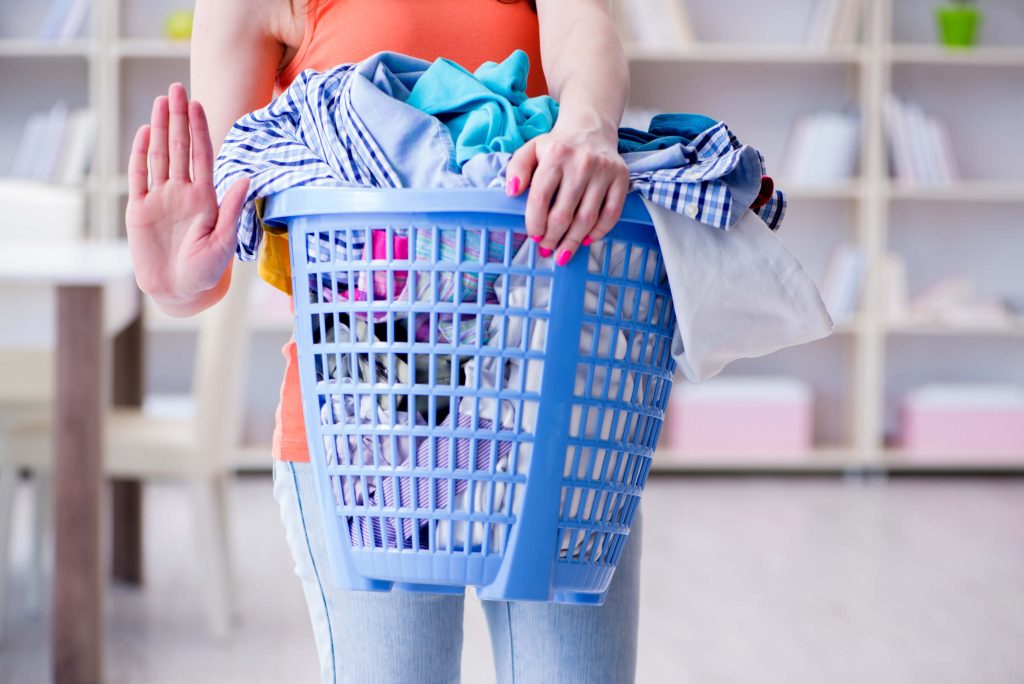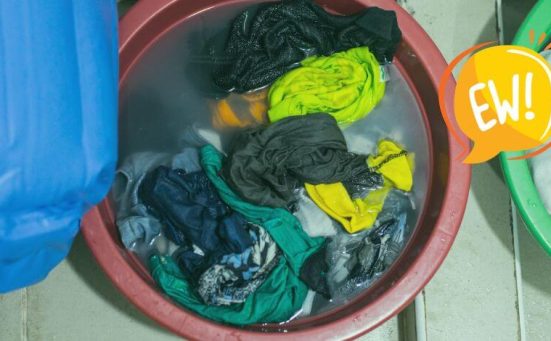
LG Washing Machine Cycles Explained (front & top load settings)
Choosing the right wash cycle is essential to keep your clothes in top condition and make your machine last longer. LG washing machines, whether front loaders or top loaders, come equipped with a variety of cycles that cater to different types of fabrics and soil levels.
This guide will help you understand how to select the perfect cycle for your laundry needs, ensuring efficient cleaning without wear and tear.
This applies to front loading machines as well as top loaders and will be useful if you have just bought an LG washing machine or are considering buying one.
Keep reading to avoid common mistakes and learn some handy tips that could improve your laundry routine.
LG Washing Machine Cycles

LG washing machines have a number of default settings and cycles which can range from temperature, spin speed, materials being washed as well as how dirty the clothes are and a whole lot more. It doesn’t matter whether you choose a front loader or a top loader, the cycles will be the same.
Normal Or Cotton Cycle
The cotton or normal cycle is used for washing dirty clothes, including jeans, shirts and mixed fabric, which are agitated in the drum in various directions.
In the default settings, this is the program that will start if you press the “Start/Pause” button without selecting a cycle.
This cycle is recommended for jeans, T-shirts, towels, sheets, and cotton items. However, it is not recommended for delicate items like those made from silk or wool.
Hand Wash/Delicate/Wool Cycle
These cycles are the ones you should choose for washing lingerie (machine washable), lacy or sheer clothing. Including silks, woollens and any other delicate items of clothing you own.
These cycles have a low speed wash and spin cycle as well as operating at low temperatures.
If you have items which should be hand washed, select the hand wash cycle.
For wool items choose the wool cycle and for any other delicate items like nylons, lacey clothes etc, choose the delicate cycle.
Also remember that wool clothes need a special detergent for machine washable woollens.
Heavy Duty Or Large Cotton Cycle
This is one of the longest cycles on the machine because it has to work the hardest. This is a tough wash program which is designed to use less water by adding extra drum agitation.
It should be used on the appropriate fabrics which are heavily soiled.
Sanitary Cycle
This is the hottest wash you can do on your machine and is designed to kill germs and bacteria thanks to the high temperature wash cycle.
It is mainly used for cleaning heavily soiled clothing and other items like bed sheets which have been soiled with vomit, urine or faeces.
Bright Whites Cycle
As the name suggests the bright whites cycle is designed to wash all of your white clothes cleaner. It is specifically for washing white garments and keeping them bright white.
The cycle takes around 75 minutes to complete.
Towel Cycle
This is the cycle which should be used on the dirtiest stained cotton clothes as well as towels. It uses a hot wash cycle and will make your towels smell fresher.
When washed using this cycle with a medium spin setting, your towels will feel even softer and more fluffy.
Allergiene Cycle
This cycle uses steam to remove up to 95% of the allergens which are commonly found in most homes. Including;
- Dust mites
- Pet Dander
- Mould Spores
- Household Dust
- And more
This is a great program to use to wash sheets, pillow cases and underwear.
Permanent Press Cycle
This cycle is designed for formal wear and any other items of clothing you want to remain free from wrinkles after they dry. It should only really be used for clothes which have the “permanent Press” label.
It is really a milder version of the cotton cycle which washes at a lower temperature. This helps to protect clothing which has been heat-treated to retain their shape.
Tub Clean Cycle
This is the extremely hot cycle which is designed to clean the machine and remove all types of mould spores, mildew and other bacteria and germs. It is recommended that this cycle is run once a month without clothes but using a washing machine cleaner.
You can buy proprietary washing machine cleaners or you could run this program using a cup of white vinegar or bleach.
If you do use bleach or vinegar you might need to run an extra rinse cycle to ensure all traces have been removed before washing any clothes in the machine.
Rinse + Spin Cycle
Not available on all LG machines but if yours has this feature it allows you to give a final rinse to your clothes
Remember though, this cycle doesn’t wash clothes.
Drain + Spin
Designed for clothes with excess moisture retention which need an extra spin to remove more water.
This is a short cycle which will add around 20 minutes to your wash time.
Baby Wear Cycle
This is the best cycle to select to wash baby clothes which have been stained with baby food etc.
It has a prewash and hot wash program and will clean baby clothes and leave them feeling soft.
Additional Downloadable Programs

LG washing machines offer extra downloadable programs via the LG ThinQ app. Check your user manual to see if your machine supports these features.
| Cycle Name | Best Suited For | Key Features |
|---|---|---|
| Small Load Cycle | Washing exceptionally small loads (<3 lbs) | Optimised for small quantities |
| Colour Care Cycle | Preventing colour fading | Maintains the vibrancy of coloured fabrics |
| Beach Wear/Swim Wear Cycle | Bikinis, swimming costumes | Removes chlorine and salt, protects materials |
| Sportswear Cycle | Removing dirt, stains, and sweat from sportswear | Designed to tackle tough sports-related stains |
| Gym Clothes Cycle | Gym clothes | Similar to Sportswear cycle, removes sweat |
| New Clothes Cycle | Washing new clothes | Keeps new garments looking pristine |
| Denim Cycle | Jeans, dungarees, jean jackets | Tailored for denim care |
| Blanket Cycle | Blankets (except wool) | Ensures thorough cleaning of large fabrics |
| Collars + Cuffs Cycle | Shirt collars and cuffs | Hot water used to remove tough stains |
| Delicate Dresses Cycle | Slightly soiled cocktail dresses | Gentle wash to protect delicate fabrics |
| Juices + Food Stains Cycle | Removing stubborn food and juice stains | Uses hot water and extra agitation for cleaning |
| Econo Wash Cycle | Reducing energy consumption while washing | Energy efficient, less water and power used |
| Overnight Cycle | Washing during off-peak energy hours | Lower volume, continuous tumbling to prevent wrinkles |
| Half-Load Wash Cycles | Smaller wash loads | Detects and optimises settings for small loads |
| Full-Load Wash Cycles | Full wash loads | Detects and optimises settings for full loads |
Small Load Cycle
This cycle is for washing exceptionally small loads (less than 3lbs).
Colour Care Cycle
This cycle prevents your colours from fading.
Beach Wear/Swim Wear Cycle
This cycle is designed for washing bikinis, swimming costumes, etc. Specifically to remove chlorine and salt from your swimwear.
Sportswear Cycle
Specifically designed to remove dirt, stains and sweat from your sportswear.
Gym Clothes Cycle
Very similar to the Sportswear cycle as it’s designed to remove sweat etc from your gym clothes.
New Clothes Cycle
This cycle is designed specifically for washing new clothes and keeping them looking new.
Denim Cycle
Designed specifically for washing jeans, dungarees and jean jackets.
Blanket Cycle
This should be used to wash any blankets except for woollen blankets which should be washed using the wool cycle.
Collars + Cuffs Cycle
This cycle uses hotter water to help to remove stains from shirt collars and cuffs.
Delicate Dresses Cycle
This is for washing slightly soiled cocktail dresses and the like.
Juices + Food Stains Cycle
This will remove many stubborn stains from many fabrics by using a hot water wash combined with extra agitated drums.
Econo Wash Cycle
This cycle is designed to reduce energy consumption whilst washing.
Overnight Cycle
This cycle will wash your soiled clothing during night time hours at lower volume and is perfect for those of you on economy 7 or other cheaper night time tariffs.
It also prevents wrinkling by continuing to tumble once the cycle is finished.
Half-Load Wash Cycles
This cycle will detect and optimise for the best settings for smaller wash loads.
Full-Load Wash Cycles
This cycle will detect and optimise for the best settings for full wash loads.
Useful Tips For Using LG Washing Machine Cycles
With many cycles to choose from, it’s important to use the best one and program your LG Washing Machine accurately. Here are some simple reminders of the essentials:
- Always select the most appropriate wash temperature (check the clothing label)
- Always check the spin speed for your particular wash cycle
- Always ensure all traces of bleach have been removed after a Tub Clean Cycle – Before washing any clothes.
- Always empty the washing machine right after the cycle ends to avoid any chance of your clothes getting wrinkly or smelly.
- Always clean the dispenser drawer regularly to prevent the buildup of detergent residue, which can lead to mildew.
Points To Consider Before Buying Either A Top Or Front Loader

If you are reading this to learn about LG Washing Machine wash cycles before purchasing, make sure to also weigh a few other factors.
For example, you’ll need to check the area it’s going to be situated. Because there are a few design differences which will make a difference when it comes to buying a top loader or front loader.
Door Clearance
For instance, an LG washing machine with a front-loading design requires extra space in front to accommodate the outward swinging door.
Plus the door will need to be left open after the wash has completed to allow the machine to dry out and prevent bad smells and black mould or mildew.
Height Issues
Front-loading washing machine doors are quite low to the ground, which can be problematic if you’re tall or have difficulty bending.
However, you can place the front loader on a raised pedestal to solve this issue. Please be aware that using a pedestal will increase both the cost and the overall height of the machine (consider any overhead cabinets).
Similarly, with a top loader, the opening is at the top of the machine, so you need to consider this. Therefore, a top loader cannot be positioned under a low-hanging cabinet.
Top-loading machines allow you to fill them without bending down, and some models with larger capacities can manage very large laundry loads. However, if you are shorter than average, you may find it hard to reach all the laundry when emptying the machine.
Consider who handles the laundry tasks in your home and the ease of use of the machine you choose.
If your children are tasked with doing the laundry, they may struggle to reach the bottom of a top-loading machine. This issue can be resolved by placing a small step ladder beside the machine or opting for a front-loading model.
Adding Clothes After The Cycle Has Begun

Then there’s the way you wash your clothes, do you find yourself adding extra items once the machine has started?
If so, a top loader is going to be more convenient, because even though it is possible to add clothes to both types of machine, with a top loader you won’t have to wait for the water level to fall before you can open the door.
Time
Another point worth considering, is a front loader generally has a longer wash time than a top loader.
On average the wash time on a front loader is around 15 to 20 minutes longer than a similar wash on a top loader. With that said, front loaders have a far better spin cycle which means your clothes will spend less time in the dryer.
Efficiency
When it comes to energy and water efficiency, front loaders are generally slightly better than top loaders. Added to which, front loaders tend to be gentler on your laundry due to the washing motion.
Price

When it comes to price, top loaders tend to cost less than front loaders and they need less maintenance.
SEE ALSO: Why Are Washing Machine Cycles So Long?
SEE ALSO: How To Run A Clean Cycle On A Washing Machine
Frequently Asked Questions
The major difference between top load and front load washing machines apart from the obvious door position is spin speed. Front loading washing machines have a much faster spin speed. Compared to top loaders, a front loader has around twice the spin speed.
LG washing machine cycle times vary based on the selected cycle, but generally, it takes about 75 minutes for specific cycles like the Bright Whites cycle. However, times can differ based on the cycle chosen and the soil level of the laundry.
The time it takes for wash cycles to complete on LG front loading washing machines is approximately 58 minutes for a normal wash, 75 minutes for a bright whites wash, 34 minutes for a delicate wash, 73 minutes for a towel wash and around 50 minutes for a small load.
The average time it takes for a top load washing machine to perform a wash cycle is around 60 to 80 minutes depending on the make and model.
LG washing machine delicate mode is designed primarily for delicate fabrics such as silk, wool, lingerie, and lacey clothing. It may not be suitable for heavily soiled items or fabrics requiring a more robust cleaning process.
Also, follow us on Pinterest ...




Honestly, LG should pay you for doing this. This is SO helpful. Thanks, truly appreciate it.